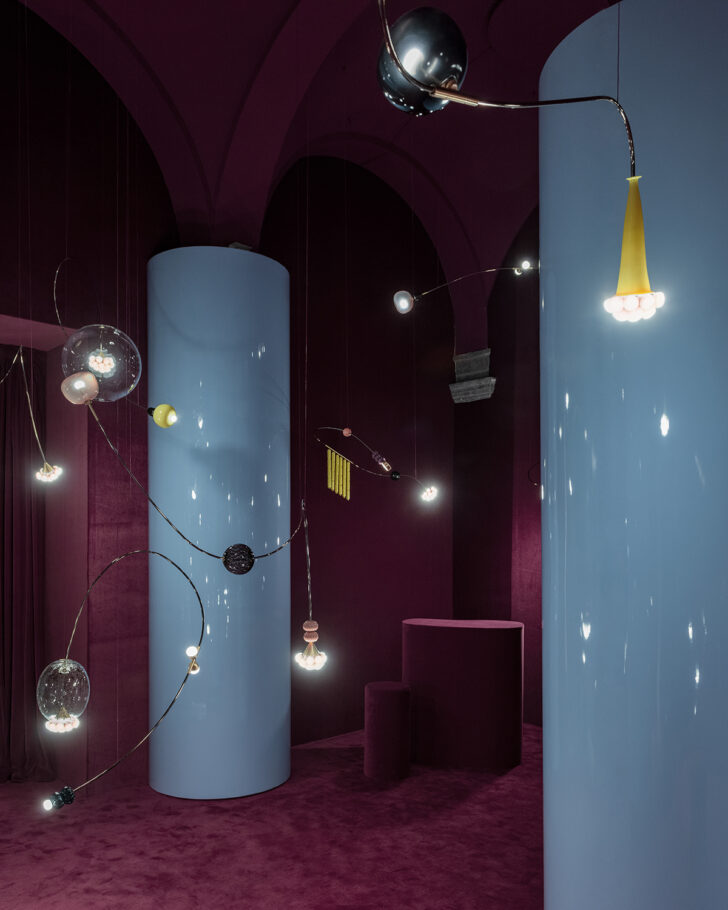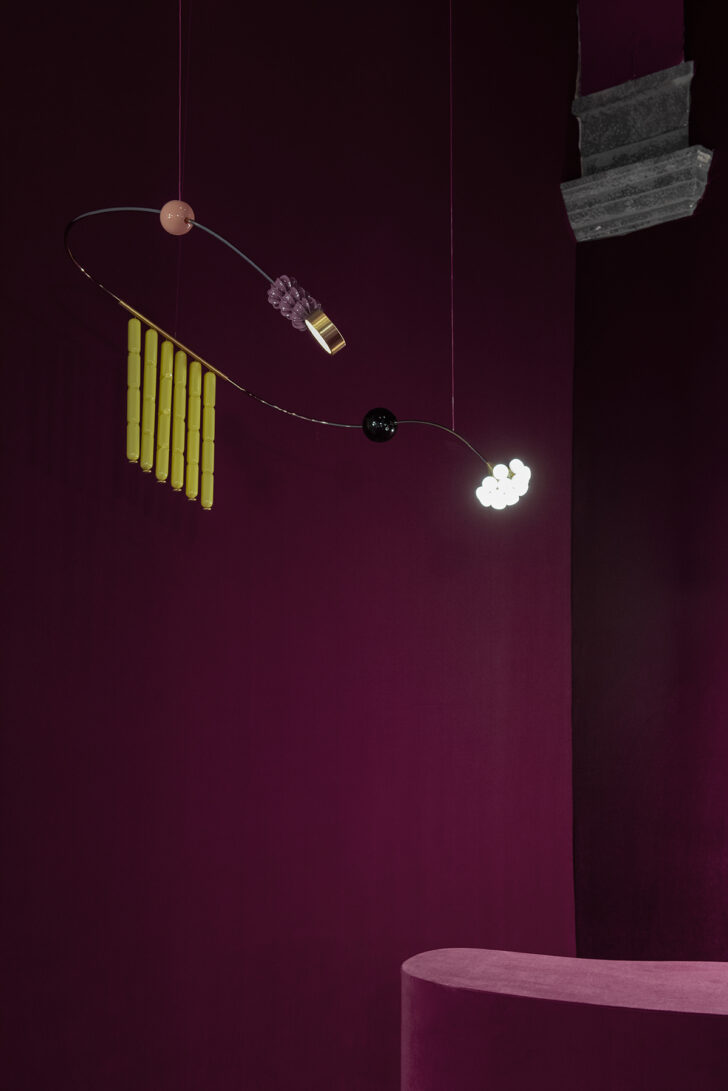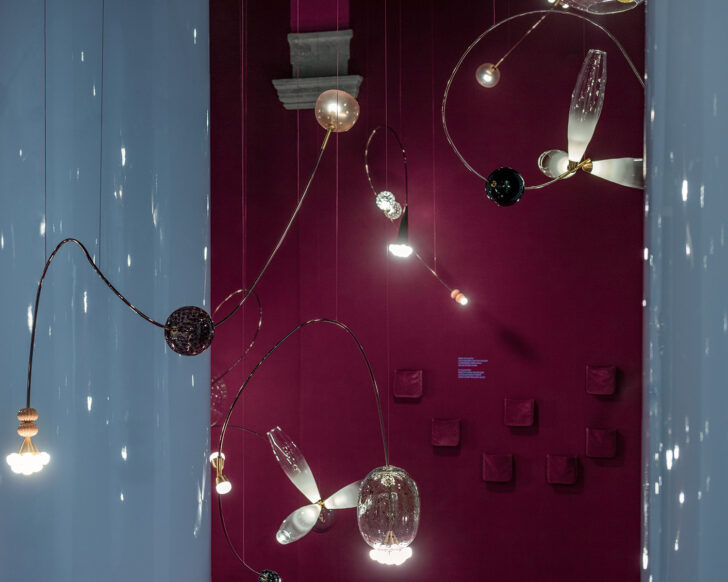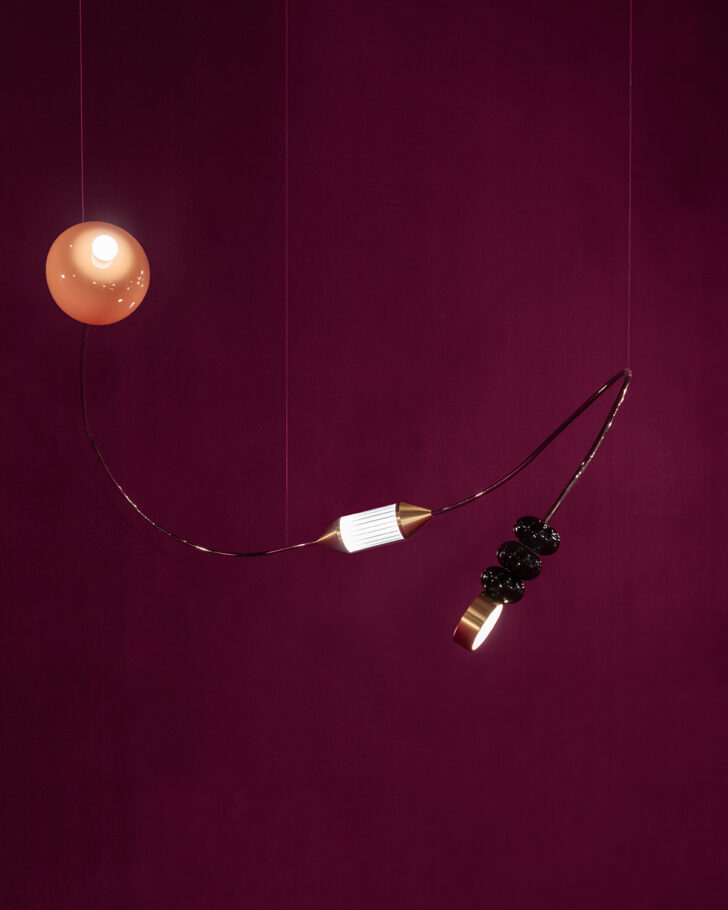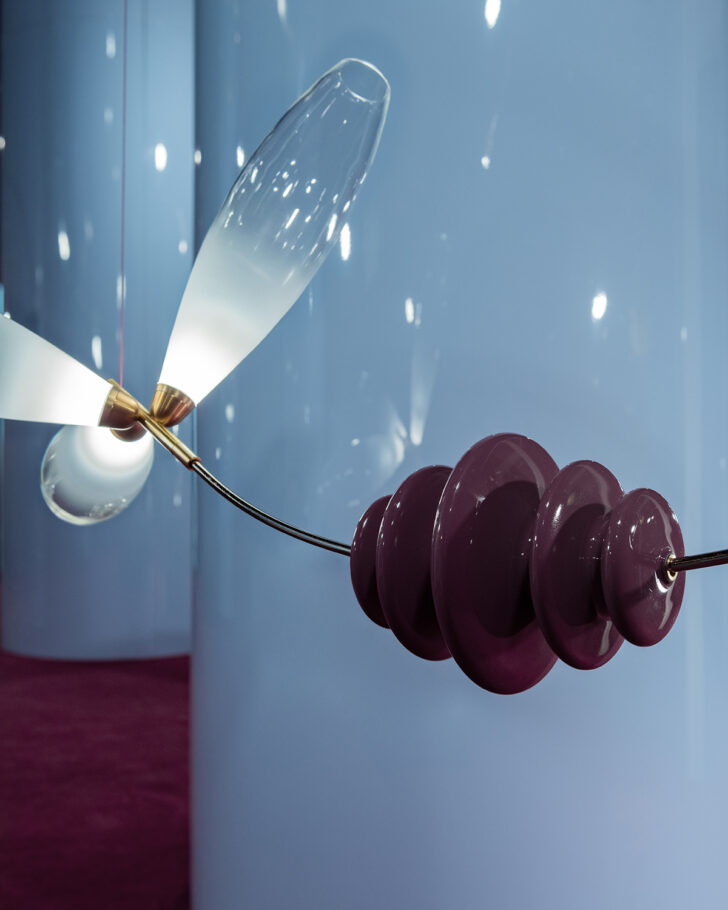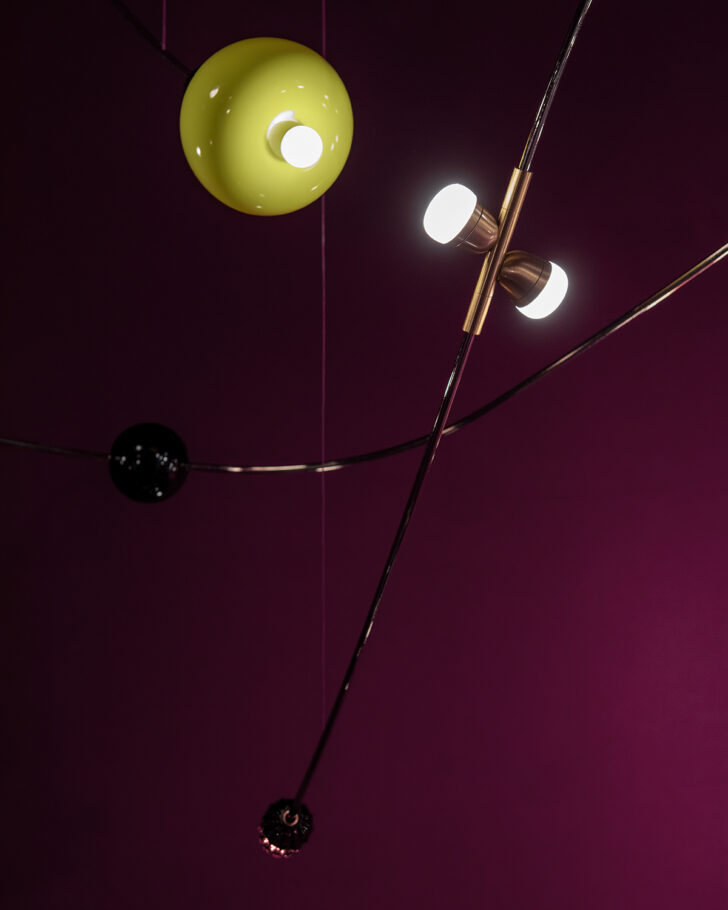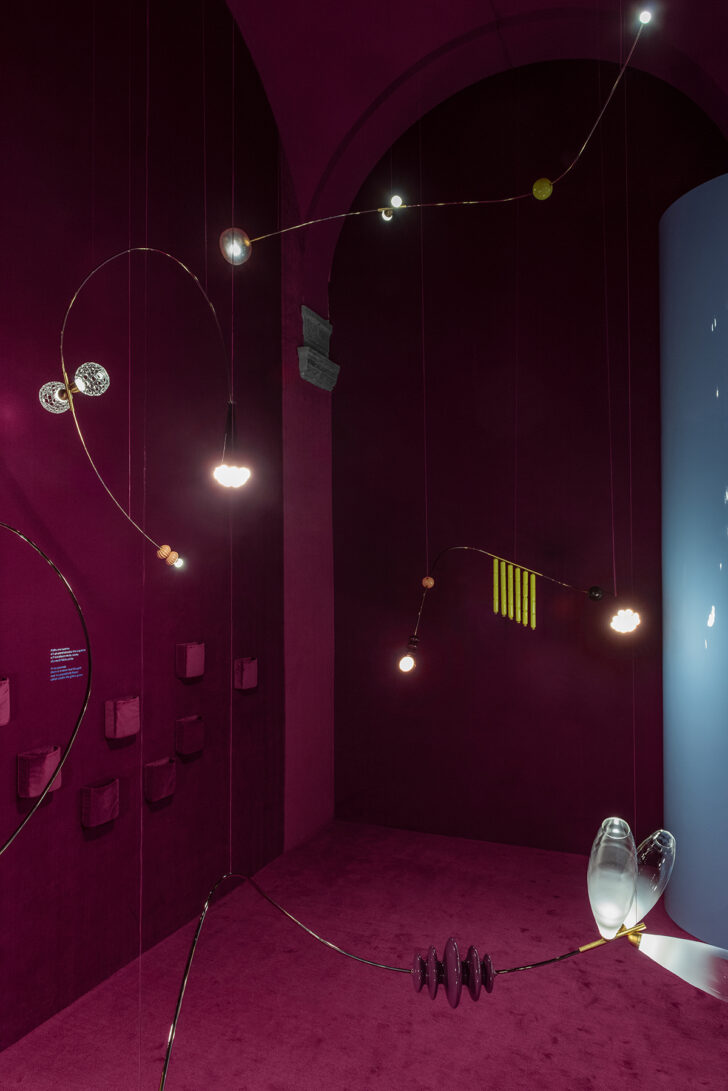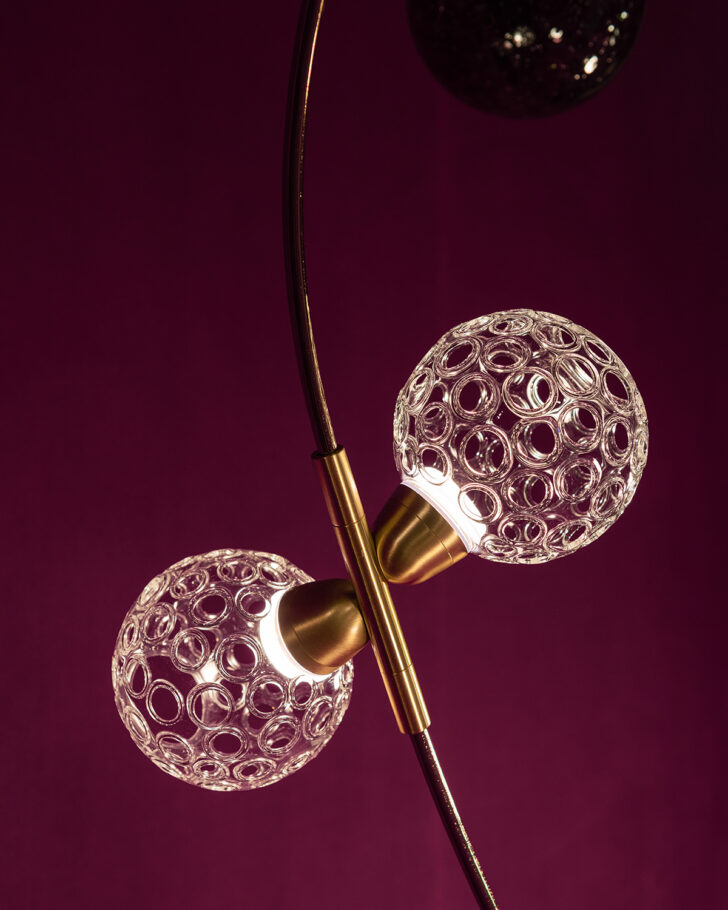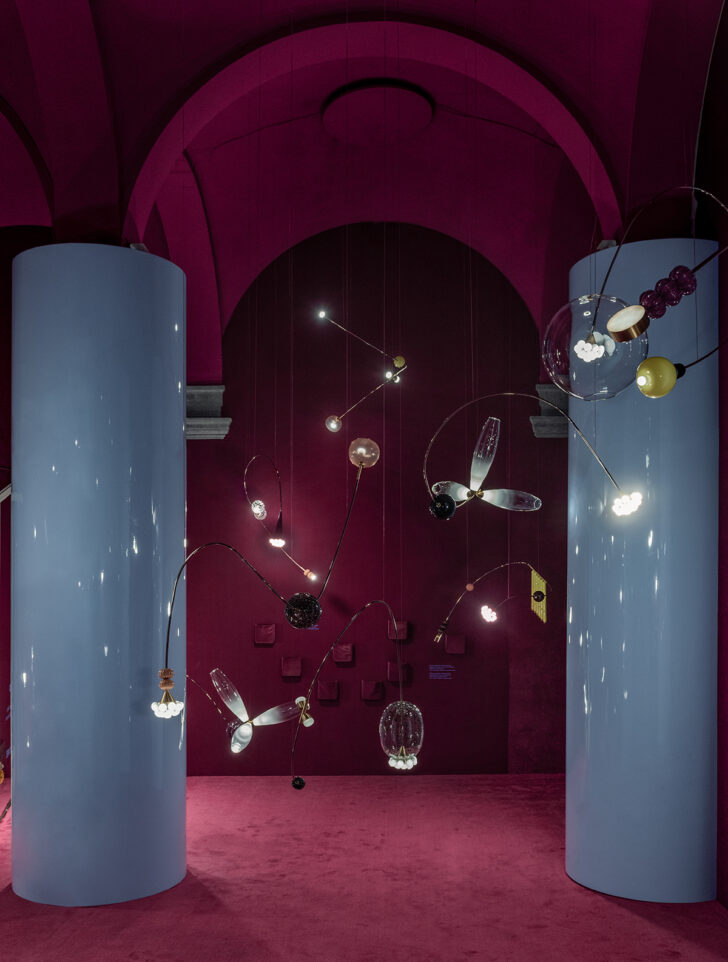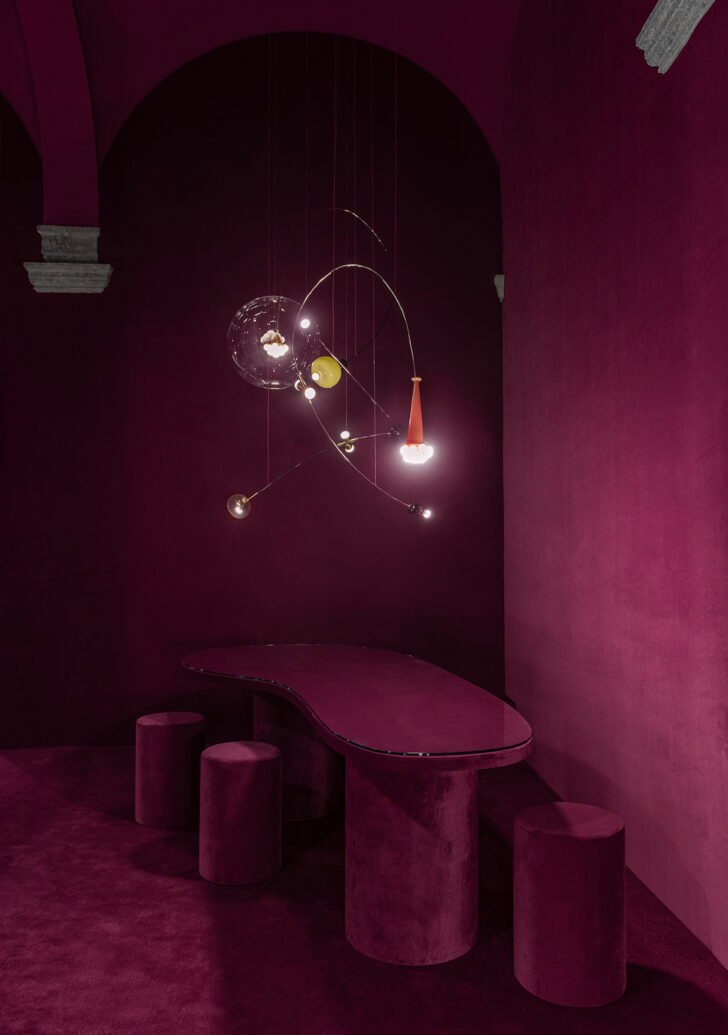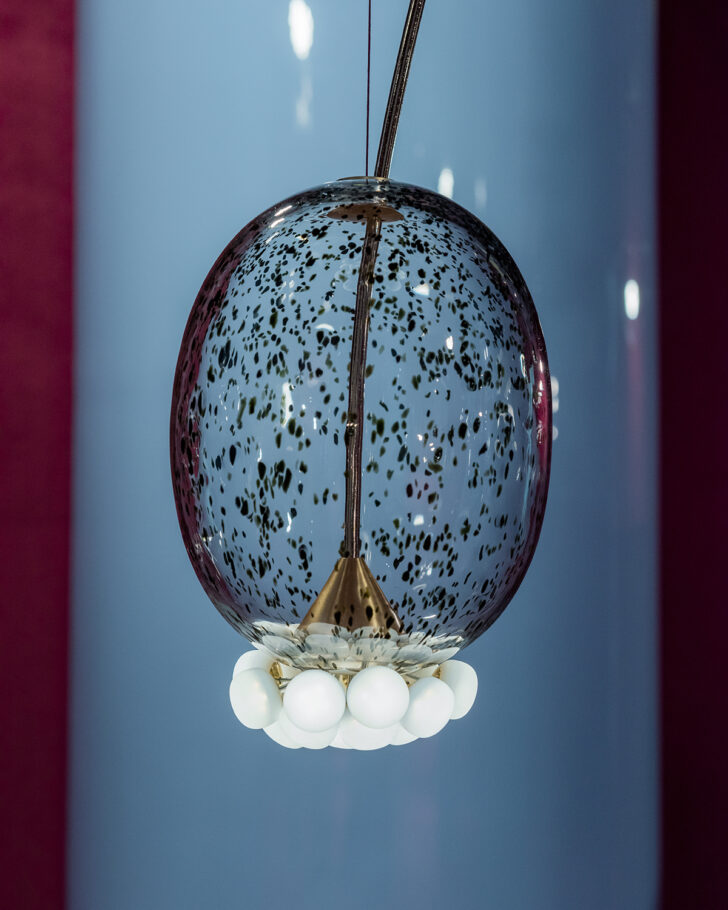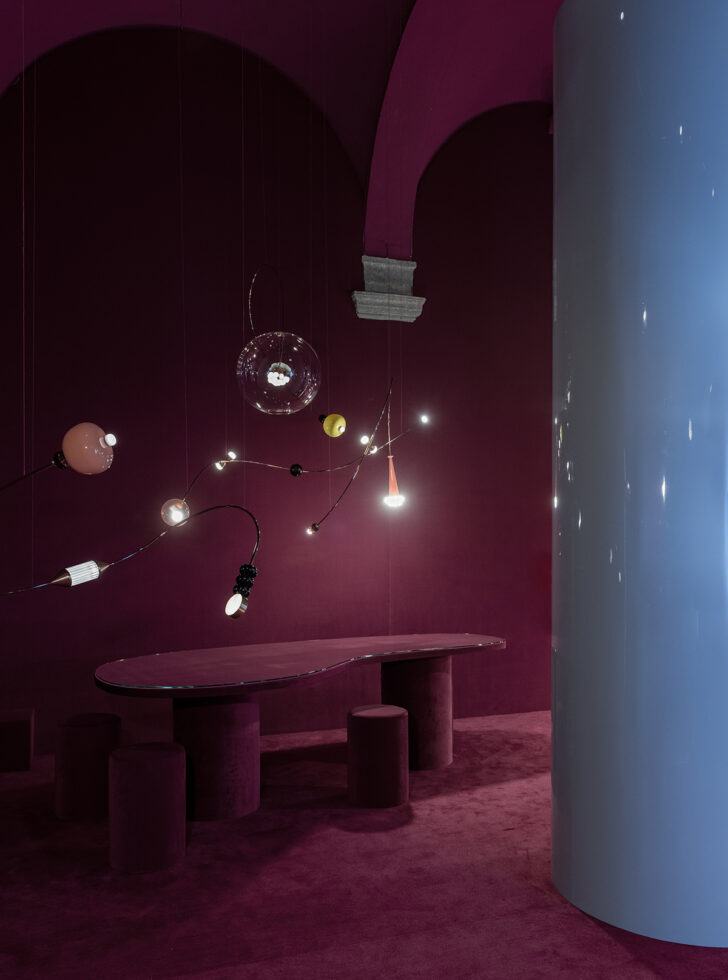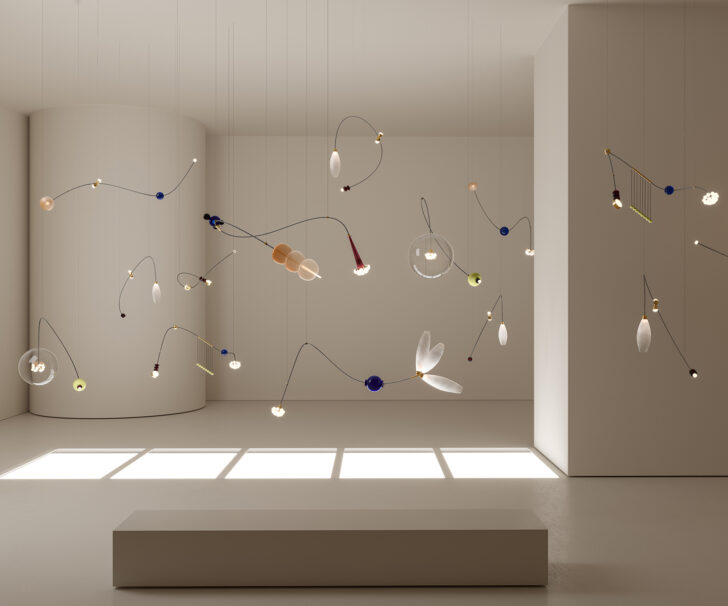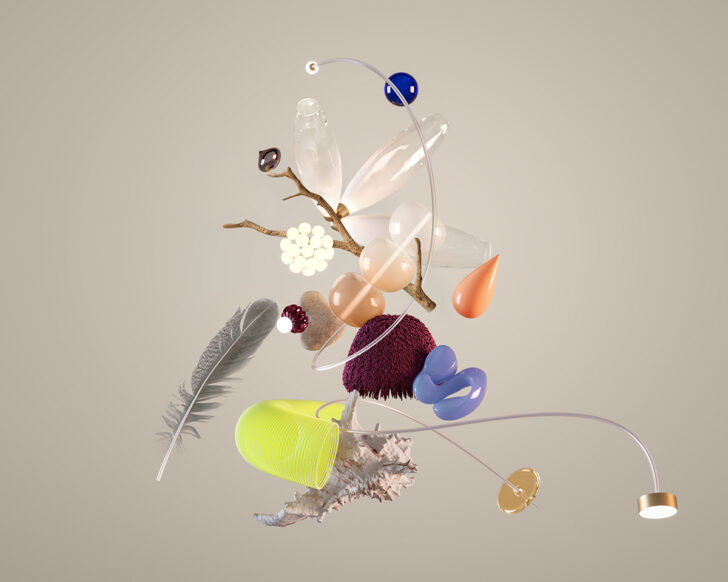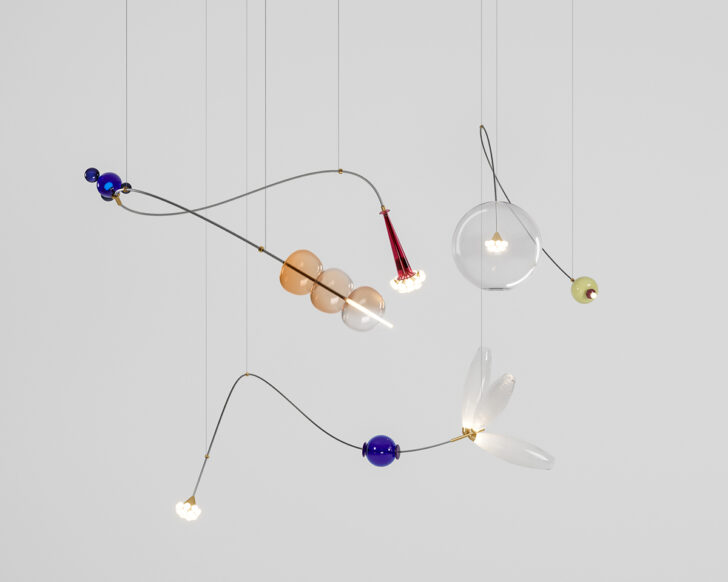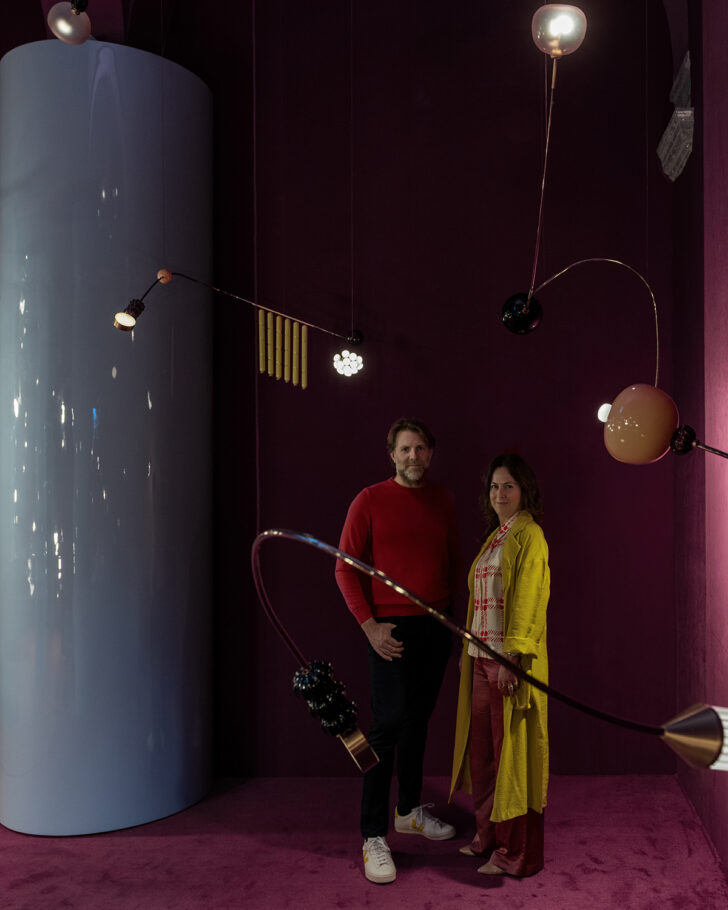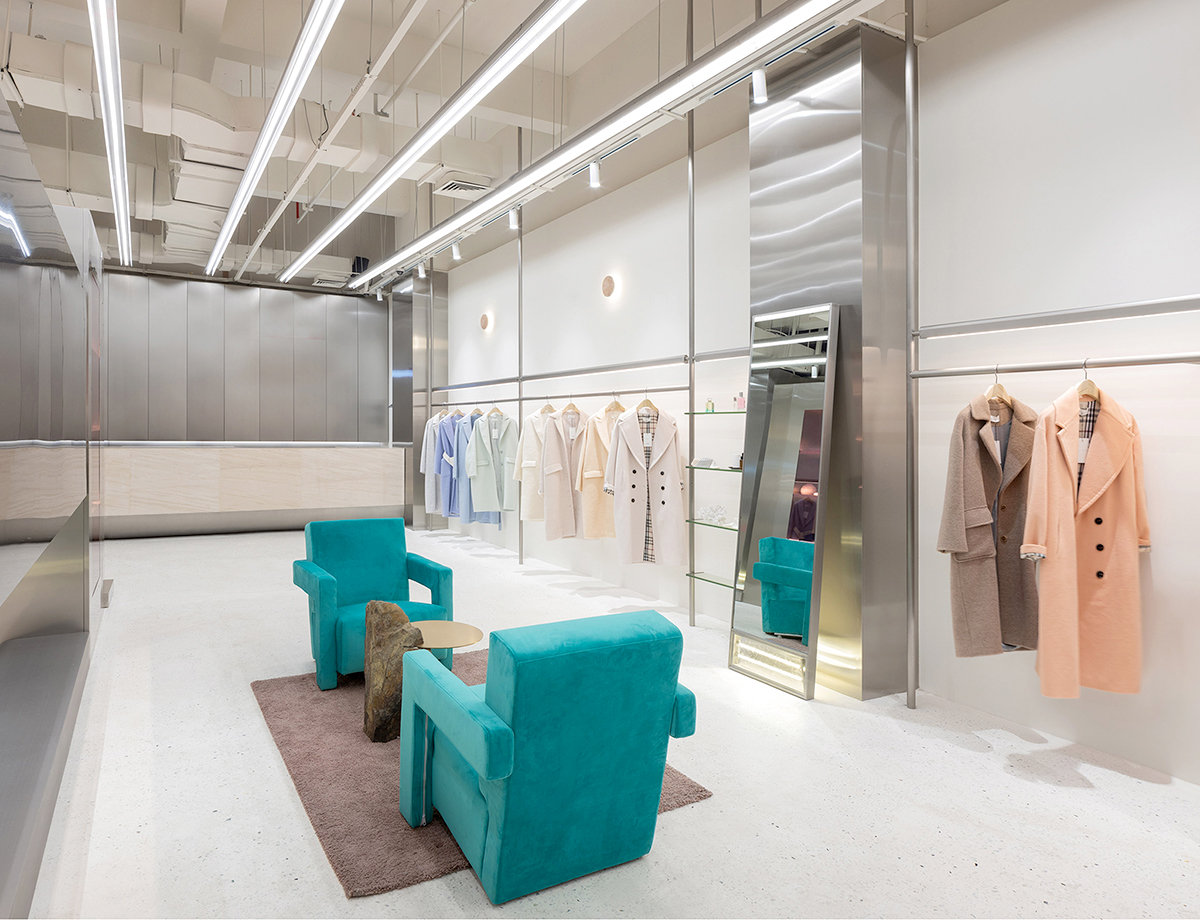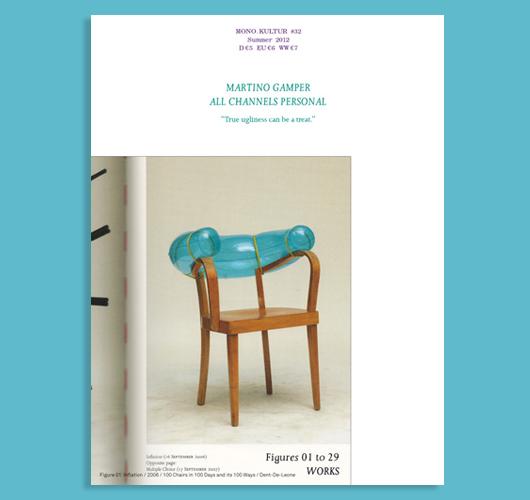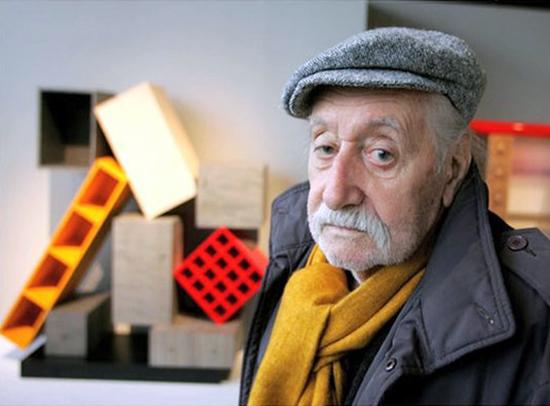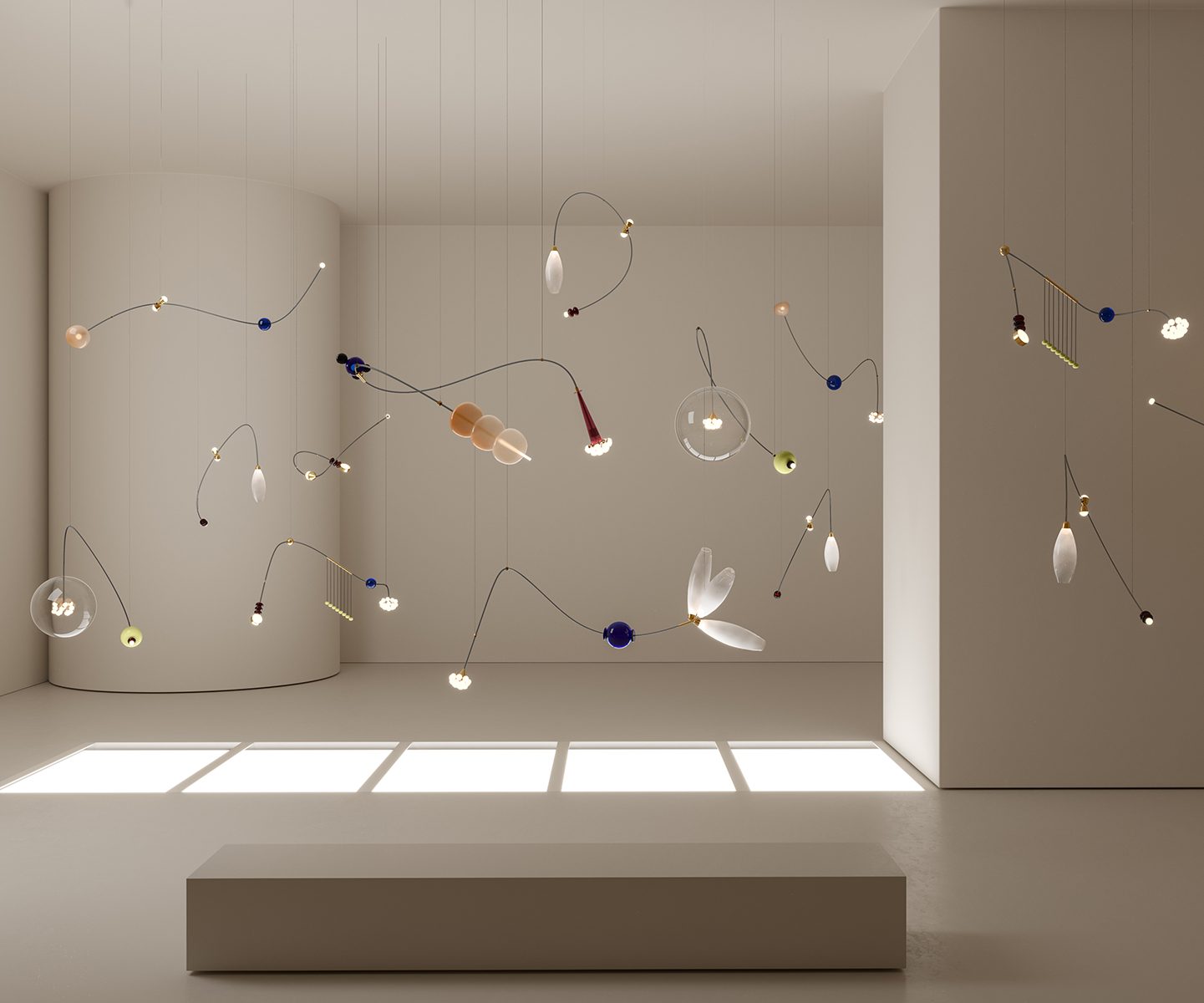
06.06.23
Excerpt: Exhibition
Inspired by a Children’s Poem, Giopato & Coombes’ Milan Exhibition Took Visitors on a Journey Through Memory
The children’s poem Il Cosario describes finding forgotten small items collected in pockets and looking at them with fresh eyes. Italian-British design duo Giopato & Coombes initially bought this poem for their son, but they kept a copy at their workstation because they found it so inspiring. When the time came, they used the process outlined in the poem’s verses to guide 18 Pockets, an exhibition during the recent Milan Design Week that presented reimagined pieces from the pair’s back catalog and ideas that had yet to be realized, combined in multiple ways to help tell the designers’ personal stories. A journey through their own memories, you could say.
Studio founders Cristiana Giopato and Christopher Coombes assembled different components from their previous collections — including the bubbly Maewha, totemic Flauti, and seed-pod-like Gem series, as well as several ideas from the cutting-room floor — into a range of sculptural, suspended lighting designs. Each associated with its own story or anecdote, the set of 18 “pocket” components included a variety of glass elements made in collaboration with Venetian artisans. These were combined with one another in different sequences, integrated with LED lights, and joined together by flexible polymer tubes to create 11 design “variants.”
For their presentation, the designs were hung at assorted heights to appear like sketches on the same sheet of paper when viewed altogether. Creating what the designers refer to as a “memory scape,” the colors of the glass elements and the glow from the LEDs in this arrangement were reminiscent of the delicate watercolor drawings that accompany Il Cosario.
The exhibition was the culmination of six years of design, research and development that Giopato & Coombes have undertaken since the studio’s founding. It took place in the duo’s gallery space in Milan’s 5Vie district, coinciding with the Salone del Mobile fair in April 2023, and visitors were given a small glass object to take away and keep in their own pockets, to rediscover — along with their memory of the exhibition — at a later date.
